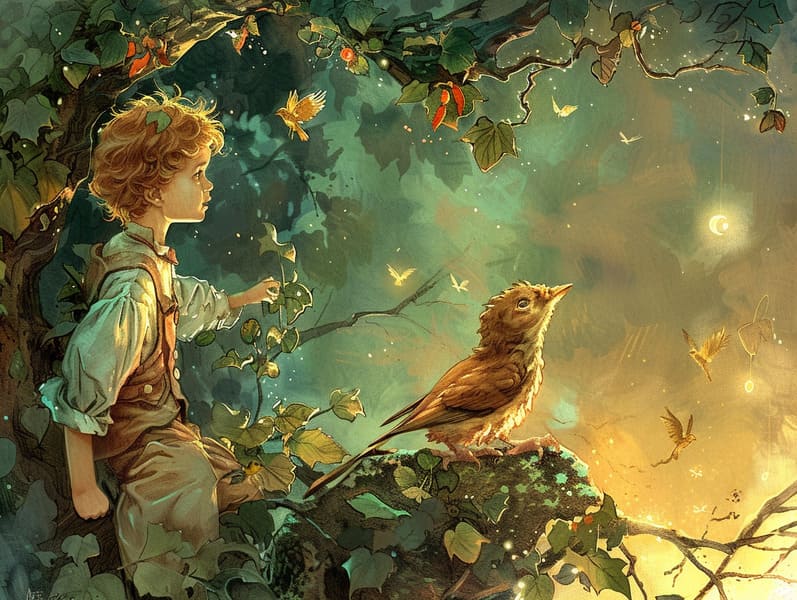The Origins of Popular Fairy Tales with the Invariable Spell.
The Origins of Popular Fairy Tales with the Invariable Spell.
Blog Article

Famous fairy tales have enduring presence. These tales have been shared from one generation to the next far before they were ever transcribed. They were born from a variety of societies, including Middle Eastern traditions. They were initially disseminated among mature audiences, often carrying themes and messages mirroring the societal norms and beliefs of the time.
The Brothers Grimm, Jacob and Wilhelm Grimm, were among the first to compile and release many of these beloved stories. Their published works, "Grimm's Fairy Tales," included stories like "The True Bride," "The Story of Hansel and Gretel," and "Schneewittchen," which have since become mainstays in the world of famous fairy tales. Similarly, the Danish author's magical fairy tales, such as "The Little Mermaid," and "The Duckling's Story," have stolen hearts worldwide, cementing their place in the pantheon of classic fairy tales.
Even though they are old, traditional fairy tales remain as important as ever, especially as children's bedtime stories. These magical stories are now available in many formats, including artistically illustrated books, delightful animations, and web-based fairy tales.
Their enduring popularity can be connected to several magical reasons:
Important Morals: Traditional fairy tales often illustrate important moral lessons. Fairy tales like "The Boy Who Cried Wolf" teach the significance of honesty, while "The Race of the Tortoise and the Hare" stress the traits of tenacity and modesty. These tales offer kids clear distinctions between right and wrong, helping to shape their moral compass in a mild yet important way.
Kindness and Comprehension: Ancient fairy tales frequently depict protagonists facing tests and troubles, provoking children to connect with their struggles and applaud their triumphs. For instance, "Beauty's Beast" illustrates the value of seeing beyond looks to recognize the real person of a individual, strengthening awareness and discernment.
Cultural Insights: Many classic fairy tales are deeply ingrained in the cultural contexts from which they bloomed. Engaging with these fairy tales can provide informative snapshots into different backgrounds, advancing a sense of global insight and appreciation.
Inventiveness and Fantasy: The fantastical elements in classic fairy tales—wizardry and magic—motivate children’s inventiveness. These tales bring readers to fantastical realms, revitalizing innovative dreams and a sense of awe that remains a lifetime.
Timeless fairy tales are not only entrancing but also instructive. They function as delightful tools in nurturing various cognitive and emotional skills in little ones. When old fairy tales are spoken out loud, they improve linguistic abilities by showing new terms and meanings and complicated sentence structures. This practice also boosts hearing perception and focus, as kids track the narrative, anxious to see what happens next.
Furthermore, contemplating the themes and characters of ancient fairy tales can advance thought processes and logical thinking. Young readers are led to notice patterns, foresee events, and realize cause and effect. These examinations also aid young ones speak out their thoughts and feelings, enhancing their emotional intelligence.
In today’s technological age, the availability of web-based fairy tales has made these narratives more accessible than ever. Websites and online apps present wide arrays of Grimm's fairy tales that can be accessed or listened on anytime, anywhere. Fairy tales read out loud are particularly well-liked, supplying an interactive way for kids to delight in these entrancing tales. Read-aloud books and read-to-me stories bring characters and settings to life, often augmented by enchanting audio effects and harmonies that enhance the narrative adventure.
The timeless allure of ancient fairy tales lies in their ability to modify to today's world while sustaining their central values. Contemporary revisions website of these narratives often incorporate more varied figures and modern settings, making them pertinent to today’s audience. However, the basic principles of boldness, compassion, and rightness remain unchanged, continuing to move listeners of all ages.
Classic fairy tales also offer a sense of protection and familiarity. They yield a structured narrative with a apparent beginning, middle, and end, often concluding with the finalization of conflicts and the triumph of right over wrong. This regularity can be soothing for little ones, yielding a sense of dependability in an fluctuating world.
Ancient fairy tales continue to enthrall and edify new generations, maintaining their loveliness and value in modern society. As bedtime stories for kids, they supply a perfect blend of magic and knowledge, enriching moral values, empathy, and creativity. The abundance of digital fairy tales and the favor of fairy tales spoken guarantee that these ancient tales remain available to new generations.
By guarding and conveying these narratives, we continue to praise the rich tapestry of narrative artistry and cultural heritage. Whether you are viewing a colorful picture book, enjoying a internet collection, or listening on an sound book, the attraction of popular fairy tales is always within reach. These stories teach us of the timeless force of stories and its ability to hold us together across generations and cultures.
Regardless if you are enjoying a colorful picture book, enjoying a online collection, or listening through an read-aloud book, the beauty of Grimm's fairy tales is always within reach.
These fairy tales reveal of the ageless force of stories and its ability to gather us across centuries and lands, creating a bond that captivates and teaches alike.